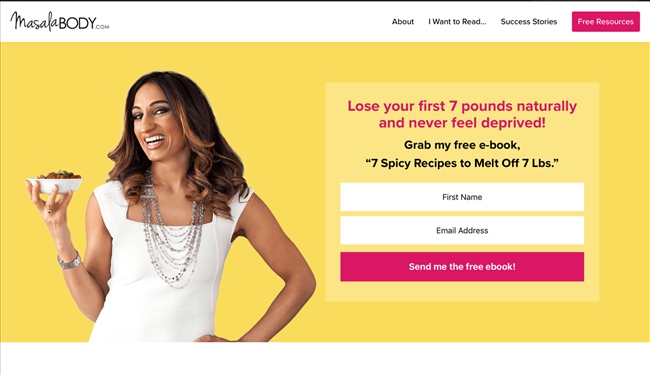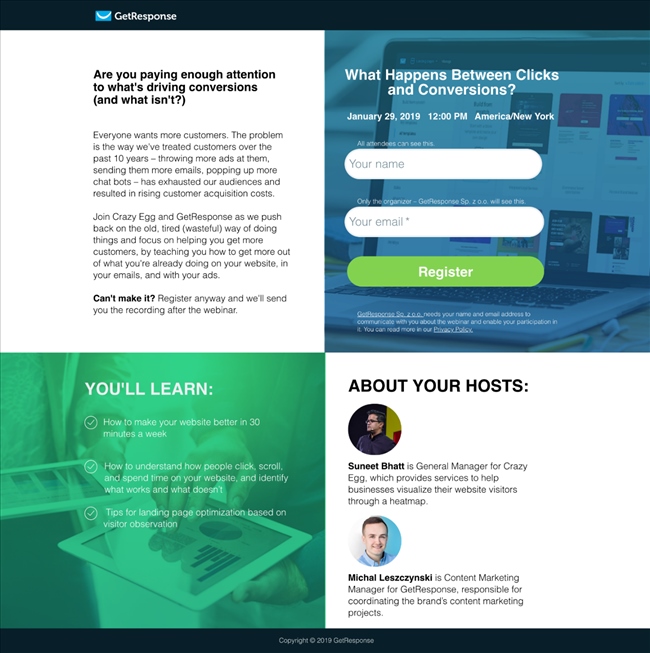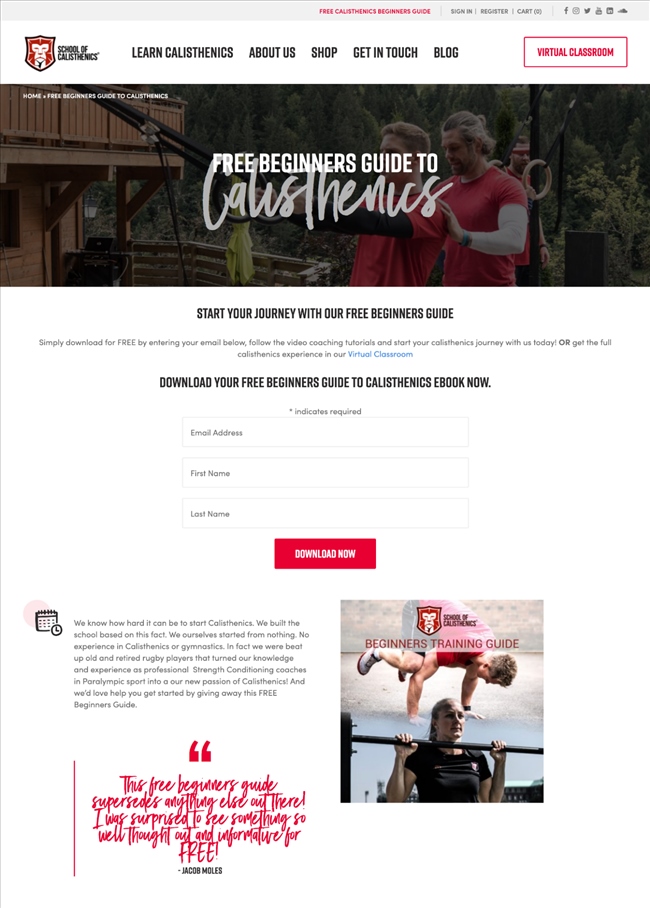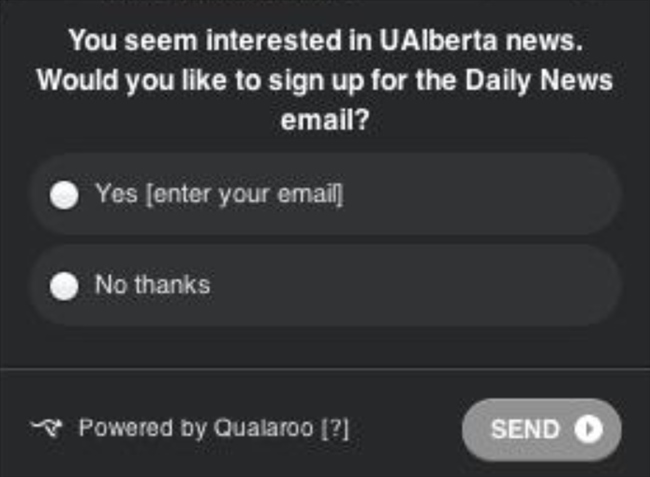Did you know it costs five times more to attract a new customer than to retain an existing one?
Focusing on customer retention is a valuable long-term solution to increasing revenue and sustainable growth, but cultivating that loyalty isn’t always easy.
When I think about the brands I like best, like Spotify, Amazon and DAVIDsTEA, I know I’m not a loyal brand advocate just because of their products. I can buy cheaper tea, music and house appliances from many other places.
One of the ways Spotify, Amazon and DAVIDsTEA nurture customer loyalty is through valuable content. While there are many ways to do this, email marketing is one of the most effective ways to reach your target audience – if done right.
If you’re starting from scratch, building an impressive email list can be tough. Here, we’ll present some high-quality strategies for building an email list from scratch.
Best of all, these strategies are designed to cultivate a loyal email subscriber base, so you can better use your email to attract long-term customers.
Why is building an email list important?
Your email list can be your most valuable business asset.
For it to be useful, however, you need to make sure that you’re constantly getting new contacts to join your subscription, and that you’re engaging and nurturing existing ones with your email campaigns to turn them in loyal customers.
Above all, make sure that your email list is high quality. You will want to focus on attracting people who will benefit from using your product or service and possibly become your customers
How to build an email list from scratch?
In email marketing terminology, building an email list from scratch is called organic email list building. This means you find a way to reach your target audience and ask them to sign up for your email marketing program.
The organic list building strategy is permission-based, which means that only people who have expressly expressed consent will be added to your list.
How to build an email list quickly?
The fastest way to grow your email list is to run PPC ad campaigns and drive traffic to your attraction page. There you will also need a lead magnet that can convince your website visitors to leave you their email address.
You can also partner with other brands to promote each other’s content (e.g. eBooks) or host webinars together and share a mailing list afterwards.
In this article you will find lots of ideas that will help you build your email list in no time.
Basic email list building tools and resources
Web forms
A web form aka registration form is an HTML form installed on a website to allow visitors to register. There are different types of forms to choose from, e.g. signup form, download box, scrolling form, fixed bar, lightbox or exit popup.
To create web forms, you can either code from scratch or use a list builder, like the list builder built into tools like: Mailchimp or Klaviyo.
There you will find a variety of templates to choose from and a visual editor that will allow you to customize your web form to match the style of your website.
When designing your web form, think of the quality-to-quantity ratio. If you want to reach a specific target audience (for example, to generate B2B leads), you may need to create a longer web form that requires more details: company name, company size , location, etc.

On the other hand, if your goal is to reach a broader audience (e.g., reach potential e-commerce customers), you might just ask for basic information like name and email address.
The general rule is that the longer the form, the fewer people sign up. The shorter the web form, the more sign-ups you get, but you can’t be sure how many actually meet your criteria. The trick is that you have to know your goals and only ask for relevant information to balance the quality/quantity ratio accordingly.
Landing page
A landing page, also known as a “lead page” or “about page,” is a website designed with a unique call to action for high conversions. In email marketing, landing pages are often used to generate leads.

Again, there are many ways you can create landing pages but the most convenient way is to use a landing page builder and a captivating headline.
For tips on how to write headlines that sell, check out “Homepage Headline Makeovers: 3 Simple Formulas That Sell”
Webinar
Webinars also known as “webinars,” “webinars,” or “live meetings” can be a great way to build an email list with high-quality contacts. The idea is simple – you provide valuable information to everyone who subscribes to your contact list.
Carefully planned webinar content is sure to appeal to your target audience. You can promote your webinar through other online marketing channels to maximize reach.

Lead magnet
A lead magnet is something of value to your target audience that you offer in exchange for their contact information. Lead magnet’s goal is to encourage sign-ups and maximize the number of targeted leads obtained through the web form.
Lead magnet example:
- Ebook: Electronic Book
- Guide: Guide
- Report: Report
- Checklist
- Resources
- Framework
- Educational materials

Of course, you can offer other types of “free gifts” or “opt-in bribes.” The bottom line here is that if you want to grow your email list, you need to create content that your audience will be willing to leave their email addresses with.
This article will give you more lead magnet ideas that will help you grow your email list fast. Plus, you’ll find valuable tips on what content you should create to generate the highest number of subscribers.
For effective lead magnet implementation, check out
5 Tips to grow your email marketing list
1. Create a personalized CTA (call to action) for each blog or landing page.
HubSpot has found that personalized calls-to-action have a 42% higher view rate than the same call-to-action for all visitors – almost twice as many email subscribers as your potential.
It makes sense: people visiting your blog post or website are looking for something specific, so your CTA needs to meet those unique needs.
For example, if you have a lot of traffic to your blog post “Email List Building Strategies”, why not entice those people to subscribe to your email list by including a simple CTA. as follows: “Click here to download the free listing – building kit. “
Of course, a personalized CTA only works if you have the resources to create that quality content in the first place, but that process doesn’t need to be expensive or time-consuming.
Instead of a toolkit, you can also offer an e-book, a quiz, or an exclusive article from your CEO on list-building strategies.
If you provide content that is directly relevant to your visitor’s needs, your email newsletter won’t look like a gimmicky advertisement. Instead, it should feel useful and valuable – key principles for a long-term customer retention plan.
2. Create pop-ups or slides for each page of your website.
A pop-up may sound annoying at first, but I’m not talking about those early 2000s pop-ups that promised you “Become a Model NOW”.
Instead, I’m talking about timed pop-ups or on-page retargeting. After a user spends a certain amount of time on your page, they may receive pop-ups related to the content on that page or their behavior.
Examples include exit popups, which appear when the user tries to leave the page, or scroll popups, which appear after the user scrolls a certain percentage down the page.
3. Create a pop-up survey from time to time.
Most people don’t go to a new website and think, “Where’s the email signup form?” Usually, you need your viewers to feel invested in your content before you make their email inquiries.
To build your email list, you may want to reach visitors on specific pages with surveys related to that content. I’d be more willing to answer the survey question “A or B” if I had invested in content – it feels like a fairer trade-off.
For example, the University of Alberta email subscriber list has grown by nearly 500% in just one year, thanks to a pop-up survey over time they conducted:

The University of Alberta pop-up survey only appeared after a visitor stayed on the news site for 10 seconds. At that point, viewers have already seen some value from the content, so ideally they’re more inclined to sign up for emails from the source.
The University of Alberta survey pop-up is also one of the easiest I’ve seen. You enter your email and you’re done. People often don’t want to sign up when the form is too long and they don’t have time, so a simple yes or no question can be the best way for you to grow your email list.
4. Describe the value in your CTA
We’ve talked a lot about the different formats you can use in your CTA (including pop-ups or personalized offers embedded in blog posts), but what about what about the language in the CTA itself? You can rely on more than humor and satire to get clicks.
To optimize subscriptions, ironically, you don’t want to use the word “subscribe”. Who wants to subscribe to more spam emails? Instead, you want to outline the value you can offer upfront, using language like “Download”, “Featured”, “Exclusive”, “Access”.
For example, you could write, “Download our exclusive eBook now” and include an email signup form, or you could say, “Access all of our exclusive offers”. Both of these CTAs make clear the value your customers get for providing their email address.
Your web viewers need to know how your email can provide exclusive content that isn’t already on your website. They want to believe that your company is offering something special via email, or else what’s the point?
5. Showcase your email newsletter on your social media accounts and email signature
You may not have a long list of email subscribers, but that doesn’t mean you don’t have a network. If you have a following base on Twitter, a fan base on Facebook, or businesses you communicate with via email, why not use those solid and loyal connections to build an email list?
You could try posting an email newsletter on your business’ Facebook, Twitter, or LinkedIn account. People who follow you on those sites already know they like you, but they’re not necessarily the recipients of your newsletter. Give them options.
If you’re not comfortable showcasing your email newsletter on social media, or if you don’t have a lot of followers on any of your accounts, you can also include a link in your signature. your email – that link could go directly to your email newsletter, or it could be a link to a blog post or landing page with an email signup CTA.
You or your employees communicate daily with a diverse group of people via email, and as your recipients get value from your personal email, they may want the option of clicking on the link and exploring your company more in-depth.
Grow your email list, grow your business
Email marketing not only helps you build relationships with customers, but it also provides you with a proven way to nurture leads and convert them into long-term customers.
No matter what type of business you operate in, an email list is the most important element of a successful marketing strategy. With that list, you can share your stories, promote your business and recommend products, and turn subscribers into paying customers.
To implement effective email marketing here is a series of articles for you to follow:
- What is Email Marketing? Definition and Strategies
- 12 Email Marketing Tips for Successful Campaigns
- Inside the Trends in Personalized Marketing
Want to take the next step in growing your email list with ease? Contact Advesa on how we can help you do so.




